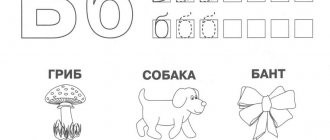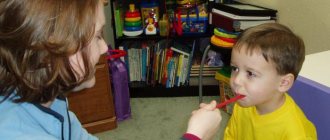What is this
Volkova G.A., Shashkina G.R., Ekaterina Zheleznova studied the positive impact of rhythmic movements on speech together with the pronunciation of words and correct breathing in Russia. From their point of view, logorhythmics is a complex system of motor exercises aimed at eliminating speech anomalies in preschoolers and developing motor skills.
V.A. Gilyarovsky and N.A. Vlasova defined what logorhythmics is differently. In the mid-20th century, they studied the causes and methods of correcting logoneuroses. The main attention was paid to the word as a way to solve speech disorders. Rhythm and movement were given a secondary role. But they noted the usefulness of speech therapy rhythms for intellectual and aesthetic development.
In other words, logorhythmics is an activity that includes marching to rhythmic music, walking to a count, and running. Simultaneously with physical activity, the task is to control breathing, pronounce phrases, sing in a certain intonation, loudly or quietly, etc. Classes are held in an entertaining format, in a group or individually.
Preview:
Goal: develop the ability to coordinate words with movements to sound signals
Planned results: personal (develop skills of independent activity; teach to understand an educational task and carry it out independently; develop the skill of self-control and self-esteem based on observation of one’s own speech and movements; cultivate interaction in a team)
subject (perceive and use by ear a simple rhythmic pattern; clearly stop movements at a signal; coordinate the movements of arms and legs; navigate in space; learn and perform new educational tasks)
meta-subject (develop the ability to navigate the goals, objectives, means and conditions of learning)
Equipment: cards, badges, laptop
1. Organizational moment.
Children are given vegetable badges. There are a lot of beds in the garden, There are turnips and lettuce, There are beets and peas, But are potatoes really bad?
Our green garden will feed us for a whole year. (A. Prokofiev)
Children gradually rise to the music.
2. Rhythmic warm-up
Let's go on a hike, leave the garden. (Walking in circles)
We stood on our heels together: Let's walk through the beds. (Walking on heels) If we approach the river,
Let's move on our toes. (Walking on toes) Let's go down the slide carefully, you can hurt yourself from the slide. (Running on toes “downhill”) Let’s turn the corner - There a horse and cart is waiting for us. (Running with high knees).
The horse is tired, let him rest - The car will give us a lift. (“Stomp” with imitation of steering movements)
3. Exercise “Smells”
Teacher. The smells tickle the nose: There is salad, cabbage soup, and borscht. Let's smell them.
Starting position: legs apart, hands on stomach; when turning your head left and right, inhale and exhale voluntarily.
(for the development of auditory attention, voice modulation). Children with vegetable icons stand in a circle.
We have a lot of vegetables here. Let's introduce ourselves to each other.
Everyone knows their name, calls it loudly and quietly.
Music is playing; The driver walks in a circle. The music stops - the driver stops near some “vegetable”, and he calls his “name” loudly, then quietly.
5. Exercise “The pea fell”
(to develop a sense of rhythm). Behind the screen there is the sound of a small wooden ball falling.
Teacher. It was the girl Tanya who dropped the pea. The pea fell like this: (clap rhythm).
Or she could have fallen like this: (clap the rhythm).
Or she could fall like this: (clap the rhythm), and like this: (clap the rhythm).
6. Exercise “Tanya sowed peas”
(to coordinate speech with movements to music)
In chorus. As Tanya walked across the field (Step in place) and found a pea. (Bend over, “pick up a pea”)
Ah, oh, ah, oh, (Shak your head for each syllable, clasping the tree with your hands) Tanya was sowing peas. (Imitation of action) Now the peas are growing higher and higher, They have reached the very roof. (Grabping an imaginary stem with either your right or your left hand, “climb up it”). In chorus. Ah, oh, ah, oh, (Shak your head for each syllable, clasping it with your hands) The harvest will be quite good. (Shake your hands sharply)
7. Musical moment
8. Exercise “Preparing juice” (for the development of fine motor skills)
Teacher. We three, three, three tomatoes. Healthy juice, press, press. (Imitation of movements)
Pour into the jar, (Make one hand a “ladle”) Cover with a lid. (Cover the top with the other hand)
9. Outdoor game “Vegetables”
Children wearing vegetable masks walk in a circle to the music, holding hands; in the center of the circle is a blindfolded driver.
Teacher. One evening in the garden, turnips, beets, radishes, onions, they decided to play hide and seek, but first they stood in a circle.
Goals and objectives
The main goal of speech therapy rhythm for preschoolers is the correction and prevention of speech disorders by improving motor skills. Logorhythmics also has other related goals - health improvement, physical and spiritual education.
A lesson with elements of logorhythmics poses the following tasks for the teacher:
- Breathing development
- Correction of speech disorders
- Training in control of movements, speech, functioning of the organs of articulation and breathing
- Improving coordination
- Development of all types of memory, attention, spatial orientation
- Cultivating a sense of rhythm
- Reinforcing spatial concepts
- Introduction to spiritual values (music)
- Learning to sing and pronounce tongue twisters
- Expanding your horizons
- Increasing vocabulary
Complex for children 5-6 years old
- It is better if the children themselves come up with movements to the poem that the teacher reads:
We will go to the forest today (children are walking), Who climbed the tree? (raise their heads up) Cuckoo? Cuckoo? (put hands to lips, repeat words) I’ll find you anyway
- Physical warm-up
Physical education to music. The poetic form of commands is used. Children gradually learn it by heart and pronounce it themselves.
It might be useful to read:
- Games sumo wrestlers Games for two sumo fights;
- Sumo games Sumo wrestlers game for 4;
- Rules of conduct for those involved in the gym;
- Who is the fastest runner in the world? ;
- How to quickly gain weight in the army Physical activity and proper nutrition;
- How to replace squats and deadlifts at home? ;
- How to learn to shoot accurately from a pistol Pistol shooting lessons;
- Basic techniques of pistol shooting Sports pistol shooting training;
Complexes for children 2-3 years old
Logorhythmics for kids involves the creation of special sets of exercises and entertaining activities. Games and exercises are performed using the method of imitation.
Animals
- Helps to get acquainted with the world of animals and birds. Classes involve reading poetry, imitating walking movements, and animal sounds.
- Kids can walk like a bear, flap their wings like a swan, a sparrow, walk like a duck, etc.
- Onomatopoeia is required. The teacher asks: “How does a goose scream when it flies?” Pupils should wave their arms and answer: “HA-HA!”
- Birds are used to help speech therapists and parents.
- You can use the story with the bear and the cone:
The clumsy bear walks through the forest, collects cones and puts them in his pocket...
Children walk with their teacher, roar like a bear, and collect pine cones.
Vegetables and fruits
- They expand their knowledge of the world around them, the colors of fruits, and introduce them to their names.
- The following exercises are used for the lesson:
Salt the cabbage. The poem is read:
We cut the cabbage, cut it, We chop the cabbage, chop it...
Children make movements with their hands, pretending to be a knife or a hatchet.
We salt the cabbage, salt it, We press the cabbage, press it.
And we'll grate the carrots.
They depict how they stir, salt, and squeeze chopped vegetables.
- Let's go to the garden
On the topic: methodological developments, presentations and notes
A lesson on speech development was conducted for 1st grade students at a secondary school. The topic of the lesson is “Vegetable garden. Letter S. Sounds [c],[c\'].” Present at the lesson: School administration, primary level teachers.
The game activity is called “In the garden, in the vegetable garden...”, which is dedicated to everything related to the garden - this includes agricultural work and vegetables. We specifically chose this topic because...
The activity helps to deepen and generalize children's knowledge about vegetables. Develops cognitive interest and logical thinking.
Lesson in a group of children with severe mental retardation in a correctional school of VIII type.
In this lesson, children will learn: the differences between vegetables and fruits, remember the names of the main fruits and vegetables, repeat where they grow and practice using the general words fruit and o.
Lesson notes on speech development and applications.
Source of the article: https://nsportal.ru/shkola/korrektsionnaya-pedagogika/library/2018/10/08/zanyatie-po-logoritmike-ovoshchi-ogorod
Complex for children 3-4 years old
Logorhythmics in kindergarten for children over 3 years old may include the following complexes:
You need to stretch the fingers of both hands, make locks, depict boats, household items, etc. At the same time, poems are recited on various topics:
- Who sings what?
The cat sings a song: Meow! Meow! (children petting an imaginary cat).
The clock sings: Tick! So! (the handles represent ticking arrows).
Piglet grunts: Oink! Oink! (fingers make a patch - a circle).
The cabin in the river does not sing: Mmmmm! Mmmm! (press their lips, cover their mouth with their hands), etc.
- Mushrooms
Children stand in a row and go through the forest to look for. Massage your fingers without ceasing to walk. The teacher counts, creating a rhythm.
Top-top - five steps (children step to the rhythm of the poem), And in the basket there are five mushrooms (we count the fingers on the hands), Amanita is red (we stretch the index finger), It is very dangerous. And the second is a fox (we touch the next finger), a red pigtail. Pink ear (touch the ears) The third mushroom is the trumpet mushroom. And the fourth mushroom is the morel (tugging at the ring finger), a bearded old man. Well, what is the fifth mushroom? White! (put your hands in a lock and play with your fingers).
- Singing
Music lessons are used. Children are learning. It is not necessary to sing songs; you can hum individual sounds, imitate animals, while doing physical exercises at the same time.
- Outdoor games to music
Logorhythmic exercises are performed with musical accompaniment. Words and movements are learned, attention and memory develop. You can use balls, passing them around to each other in a circle, chairs, toys to hide and quickly find, etc. Logorhythmics tasks for children 3-4 years old can be slightly complicated and used for games with the older, preparatory group.
Summary of the lesson on logorhythmics “Travel to the country”
-Well done!
Main part
4. Flexible focus on the development of diction and articulation
-Granny asks that you tell her how you got to her
- Let's say a tongue twister for her together: - in a whisper and slowly
We walked, we walked,
We reached the spruce tree.
We walked around the spruce
And they came to you.
-Let's say it louder for grandma: -quietly and slowly
-Guys, grandma doesn’t hear very well, let’s say it loudly: -loudly and quickly
5. Finger gymnastics"
MISTRESS ONCE ..."
- Grandma gave us a task, but to complete it we need to stretch our fingers. Handles are ready.
The hostess came from the market one day, “Walking” with her fingers on the table. The housewife from the market brought home Potatoes, cabbage, carrots, peas, Bend one finger per word Parsley and beets. on both hands Oh!.. Cotton. Here the vegetables started a debate on the table - alternating blows with fists and palms about who is better, tastier and more necessary on earth. Potato? Cabbage? Carrot? Peas? Curl the fingers on both hands Parsley or beets? Oh! Cotton. The hostess, meanwhile, took a knife, knocked on the table with the edge of each palm, and with this knife began to chop Potatoes, cabbage, carrots, peas, bend her fingers over Parsley and beets. Oh! Cotton! Covered with a lid, in a stuffy pot Palms warehouse. crosswise on the table Boiled, boiled in boiling water Potatoes, cabbage, carrots, peas, bent fingers Parsley and beets. Oh! Cotton. And the vegetable soup turned out to be not bad!
6.Massage
"CABBAGE"
-Look, what is this? (showing a picture with cabbage)
- Grandma asks for help to salt the cabbage. Break into pairs. One lies on his tummy, the other sits next to him.
-Guys who are sitting, imagine that your partner’s back is cabbage and you need to salt it. Let's get started. We chop and chop cabbage. They hit you on the back with the ribs of your palms. We are three carrots, three. They stroke their back with their fingers up and down. We salt the cabbage, salt it. “They run their fingers down my back. We press and press cabbage. “Pressing” We drink cabbage juice, we drink. They stroke your back.
-Well done, now let's change places.
7.Singing "
GARDEN"
-Now let’s please grandma and sing for her. We have a vegetable garden, where we grow our own carrots. Such a height. Such a height! (children raise their hands up) This is this width, This is this width! (gradually spread their arms to the sides, moving back) We have a vegetable garden, Cabbage grows there. (slowly move forward, narrowing the circle) Such a height, Such a height! (raise their hands up) This is this width, This is this width! (spread your arms to the sides, stepping back)
7. Emphasis on developing a sense of tempo and rhythm of movements
-Sung well! Let's help grandma pick tomatoes
— We all stand in a circle, as soon as the music changes, the tomato must be passed on to the neighbor.
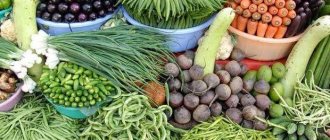
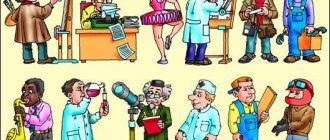
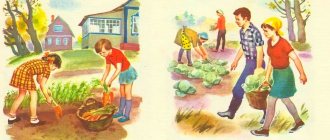
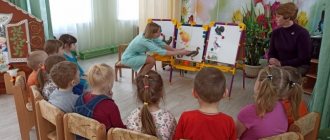
![Producing the sound [L] to a child in stages. Articulation gymnastics, speech therapy exercises, pronunciation lessons with pictures](https://doktorobrubov.ru/wp-content/uploads/postanovka-zvuka-l-rebenku-poetapno-artikulyacionnaya-gimnastika-logopedicheskie-uprazhneniya-uroki-330x140.jpg)
